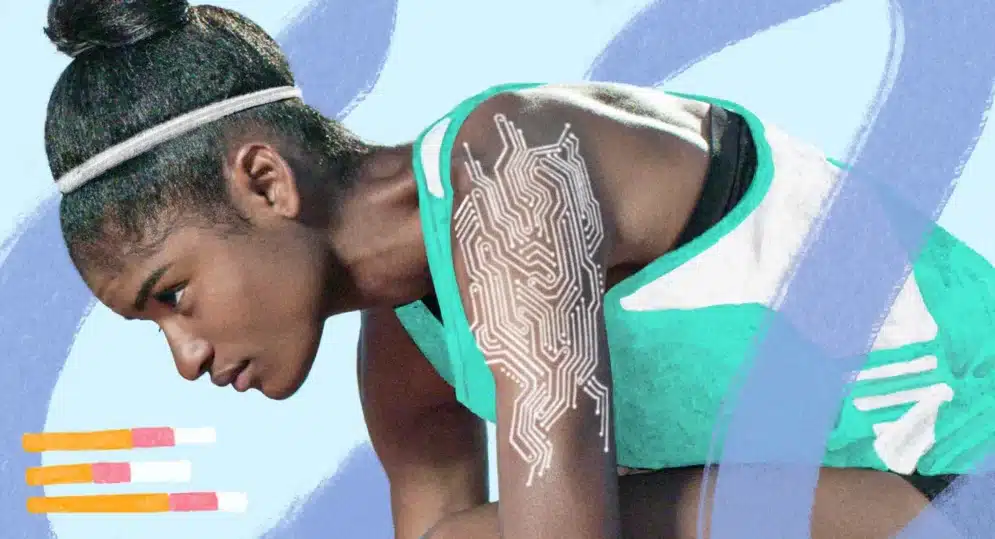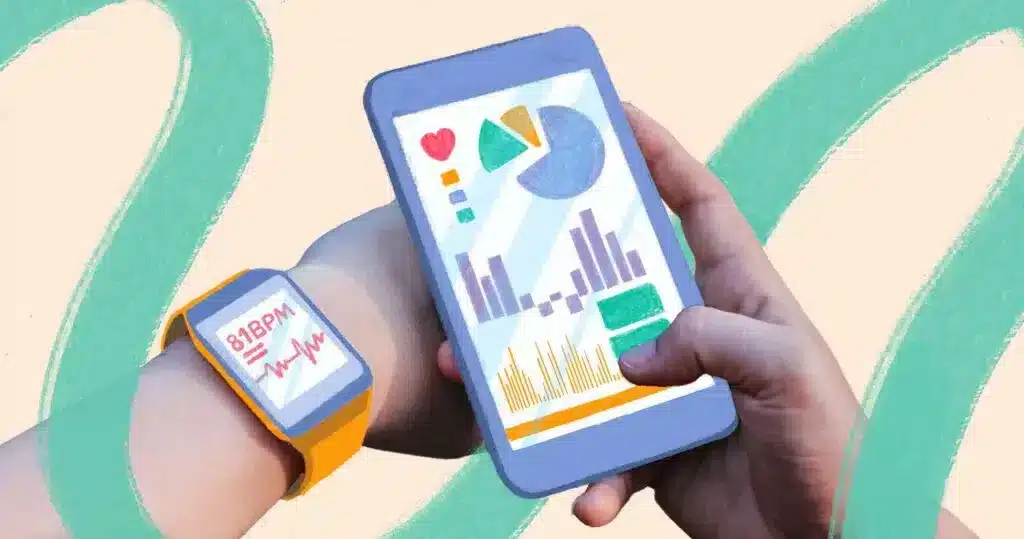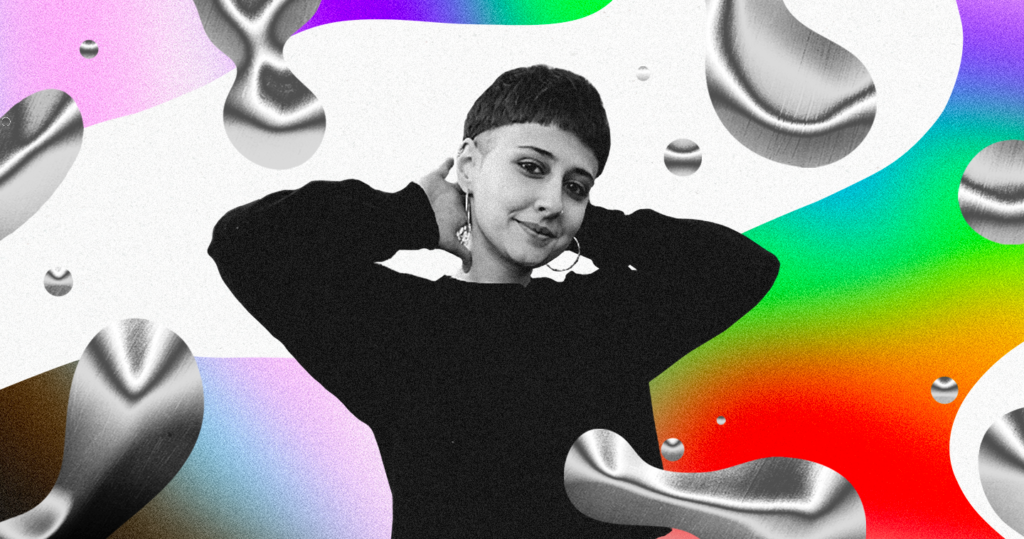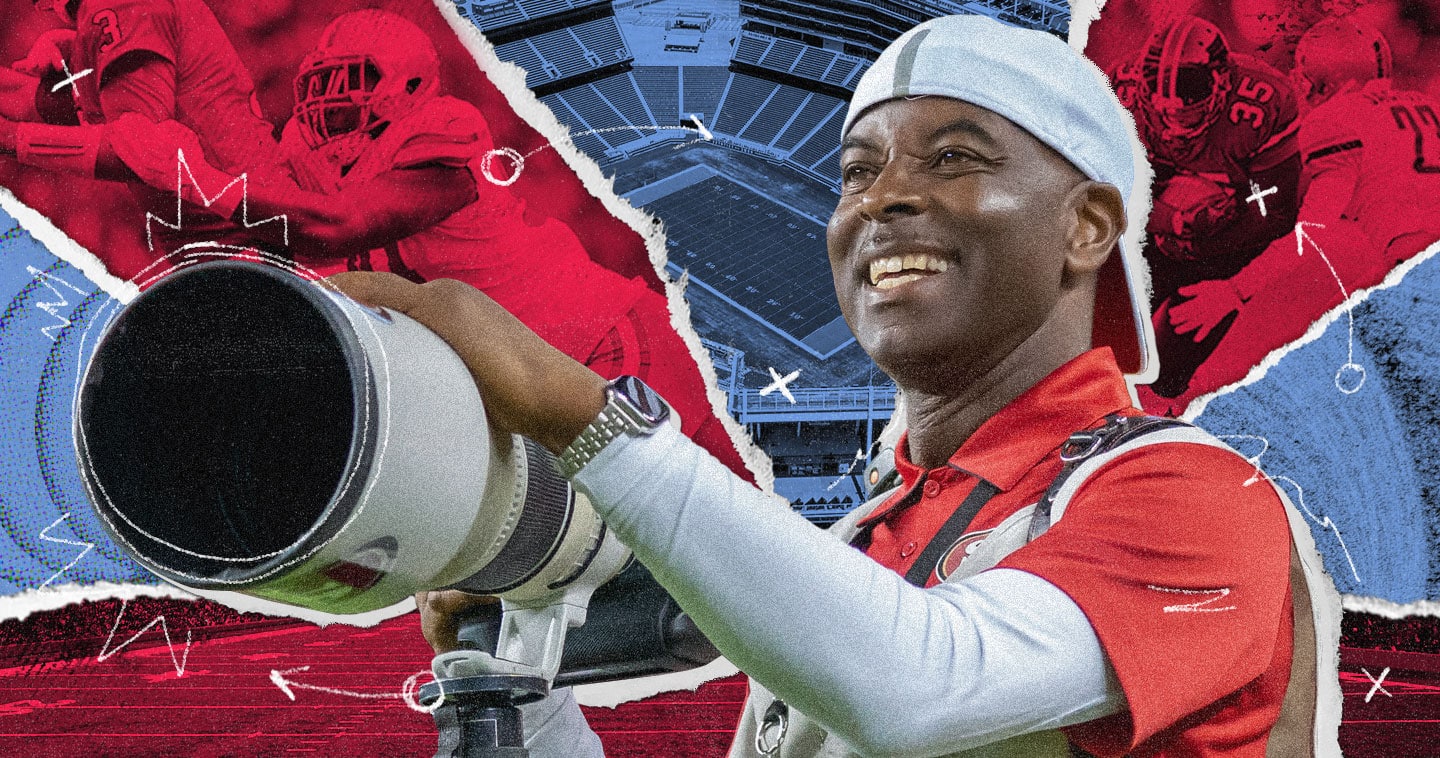Western Digital empowers Aisha Alkinaey to be herself, both in her work and in her workplace.
The most mind-blowing lesson from Aisha Alkinaey’s arts education arrived mid-meltdown. An instructor stopped her at the height of panic mode, frantically perfecting another project for her master’s at CalArts. “Aisha, it’s just graphic design,” the instructor said.
“Oh,” Aisha remembered thinking. She’d made a monster out of something she loved. Now she repeats this advice to design students of her own. “When we need to overcome a graphic design challenge, we forget it’s not that big of a deal. And when it’s not such a big deal, we get to remove our expectations.” This liberty is where expression begins.
Aisha grew up a free spirit in Kuwait, “this tiny country nestled between Iran, Iraq, and Saudi Arabia,” as she explains it to American peers. A dedicated painter and draftsman from the onset of her motor skills, her aspirations amped to full-time career after a teacher suggested arts school.
While browsing online, Aisha grew mesmerized by the CalArts website. “Even the pictures looked whimsical and kind of unreal.” Though a prestigious, historic institution, it was on the other side of the planet. Nonetheless, Aisha decided she would attend for fine art.
Her family worried about her financial prospects. Her mother encouraged her to pursue something more practical, perhaps architecture. But Aisha despised math. Further, she had a drive worth betting on, a work ethic worthy of the principal’s list. Her gamble paid off. Soon after her acceptance letter arrived in the mail, her mother helped her pack a bag for California.

CalArts felt like a brochure come to life. Dance majors stretched on the lawn while voices harmonized far away. A boy walked by playing the tuba. She’d never seen so many different hair colors in her life. “It felt like I’d been plopped into Camp Rock,” she recalled.
It was Aisha’s first time in America, let alone at an arts school. Culture shock emerged alongside another realization: fine art was not utilitarian enough for her taste. During sophomore year, Aisha decided to transfer to Art Center College of Design for illustration and fell in love with graphic design. After graduation, she returned to her old dream school with renewed purpose.
“I had a vested interest in getting my hands dirty with everything. I really wanted to dip my toes in every pool.” She studied illustration, typography, and motion. She learned the canon and language of graphic design, honing her style, a unique intersection of classic and expressive techniques. She thanks herself now for committing to a breadth of disciplines. “I like being a multimedia designer because it allows me not to feel so limited or restricted,” she said.
She began practicing her skills professionally at a small music management company, designing apparel and merchandise, social media assets, show flyers, and lyric videos. Aisha was growing a list of freelance entertainment clients when COVID hit, decimating her opportunities in music. Joel Davis, VP of creative and content design for global corporate marketing, spotted her work and saw a fit for Western Digital’s new visual direction.

The design team envisioned the color and excitement of entertainment marketing refocused for a tech brand. “It made sense to hire someone like me,” she said.
Aisha’s work for Western Digital has pulled from her wide array of expertise, leaning most heavily on her bespoke illustrations. Still an impressive doodler, her drawings have been some of her favorite contributions to date. Standouts include custom loops for GIPHY, video game characters brought to life by Nintendo Switch memory cards, and floating scenes from cloud users navigating the pandemic.
She begins with a stylus, sketching in Procreate on her iPad before transferring the file to Photoshop or Illustrator. If she’s animating, she’ll finish up in After Effects, a mammoth application prone to wearing out computers by caching users’ every decision. “It’s such a memory heavy program.” Like any art form, the tools shape the process – Aisha’s palette happens to be a powerful desktop with memory at the center, literally and conceptually.
“Not to sound like a stickler, but I start every project by organizing my folders,” she said. Graphic design generates tons of data, and editing these designs collaboratively requires nonstop file transfer. Sometimes she nails the idea on the first try, sometimes on the sixth. The organization feels intuitive. “I am not doing this for myself. It’s not just work for myself I can look at later, so it needs to be accessible. Organization equals accessibility.”
Though a far cry from indie entertainment marketing, Western Digital has come with some employee benefits well beyond health insurance. Company policy and a dedicated HR department protect her from the kind of prejudice she’s faced in previous workplaces for her sexuality and gender expression. “Honestly, it feels really good. It feels like I can’t be touched for things that I have been harassed for at some point.”
She’s grateful there are structures to protect her from intolerance. “These are work boundaries. Gender and sexuality have nothing to do with political opinions or your opinions about the Dodgers game.”

It’s meaningful when she designs shirts for Pride month at Western Digital because of this intentional commitment to diversity, free of tokenizing. The commitment to diversity and inclusion often means “allowing it to be uncomfortable, allowing room for complexity and accountability.”
She likes seeing the rainbow flags emerge in June. “I get to notice all the places that support people like me and know that I can walk in and be okay.” She likes the parades, the music. She loves the drag. Pride is an excuse to love all the queer people in her life openly, but she notices how it opens up the individual allies around her too. “When allies are around queer people, they feel they’re allowed to be more themselves. That’s the whole thing about being queer is being without shame,” she reflected.
“And what’s the opposite of shame? It’s not actually pride. It’s love.”



